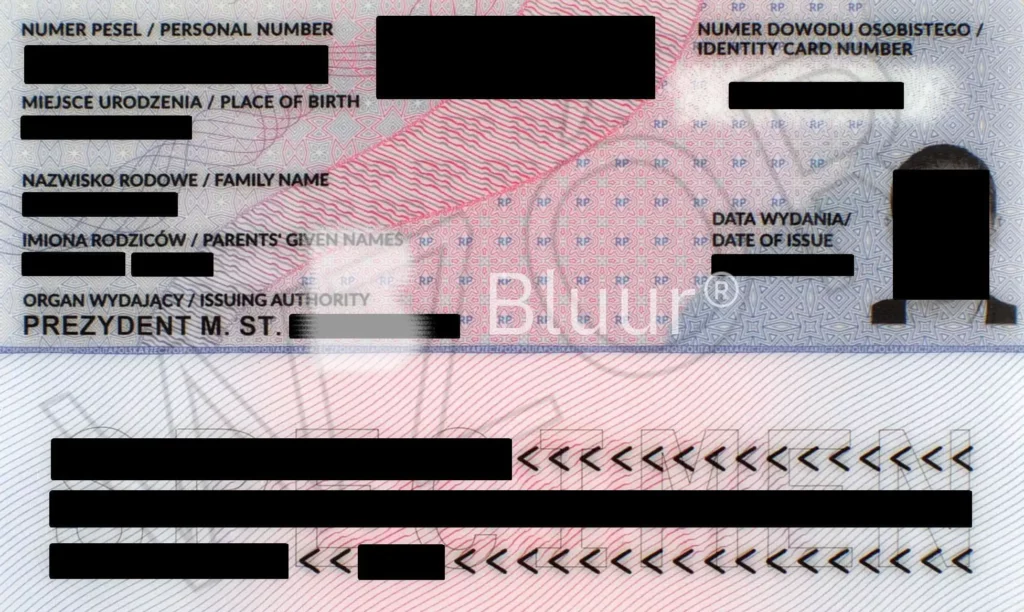Original document (front)
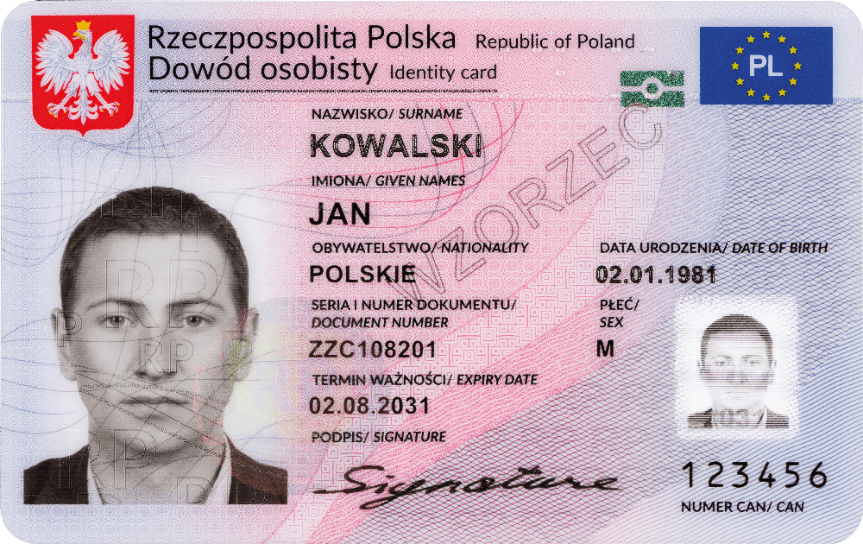
Data in document requiring anonymization
- Surname
- Names
- Citizenship
- Document number
- Expiration date of the document
- Signature
- Date of birth
- Photos of the document holder
- CAN number (number written on the obverse and reverse of the e-card)
Preliminary classification using artificial intelligence (front)
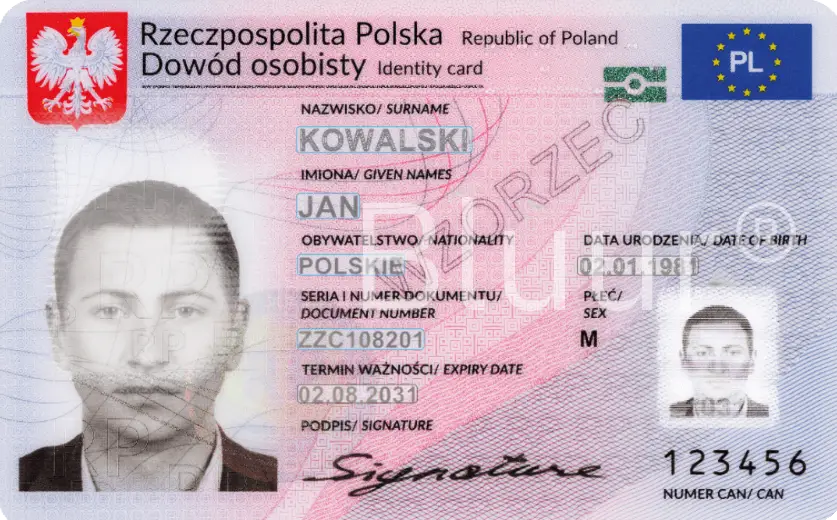
Automatically classified data
- Surname
- Names
- Citizenship
- Document number
- Expiration date
- Date of birth
- Face pictures
- Signature
- CAN number
Anonymized document (front)
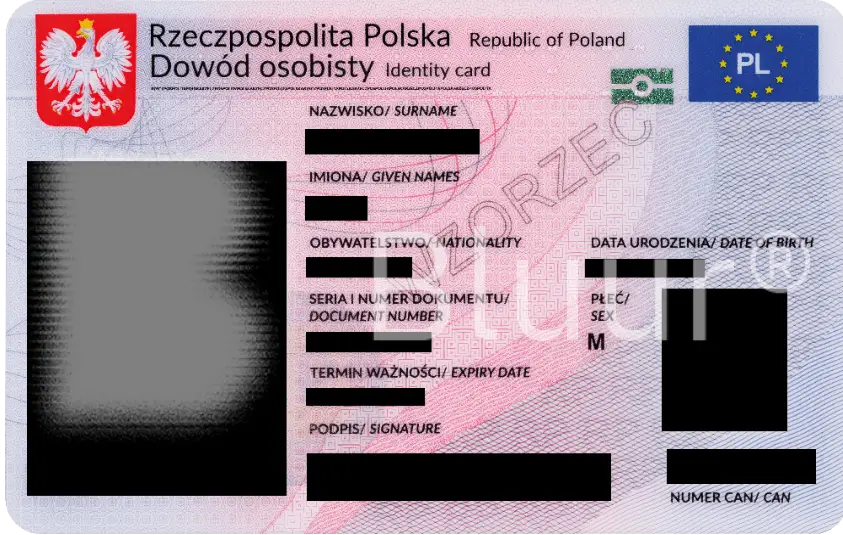
Original document (reverse)
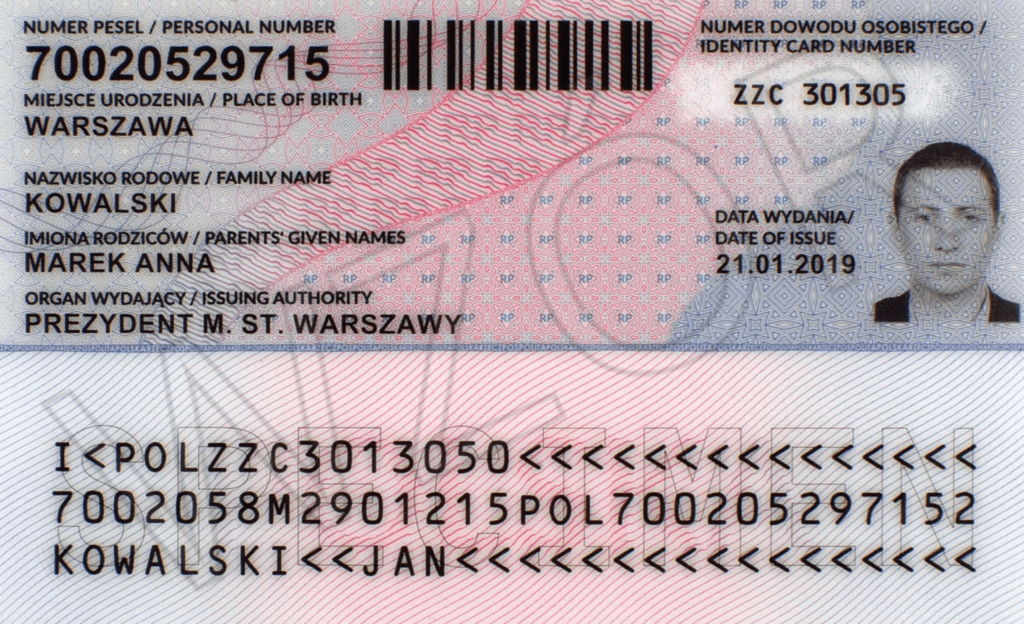
Data in document requiring anonymization
- PESEL number
- Barcode
- ID card number
- Place of birth (city)
- Family Name
- Names of parents
- Release date
- Owner’s photo
Preliminary classification using artificial intelligence (reverse)
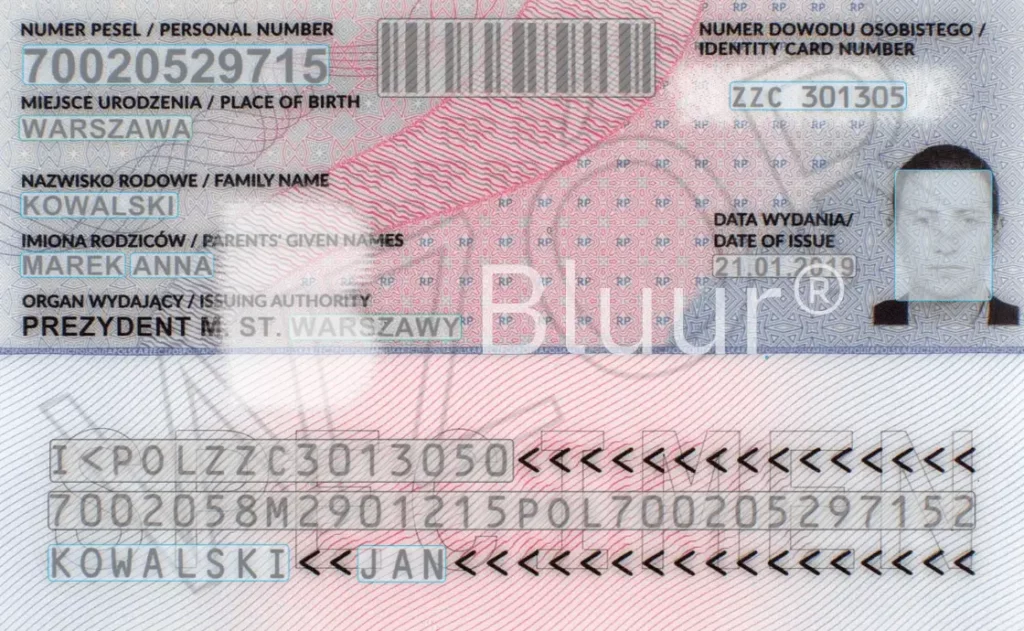
Automatically classified data
- PESEL number
- Barcode
- ID card number
- Place of birth (city)
- Family Name
- Names of parents
- Release date
- Owner’s photo
Anonymized document (reverse)
